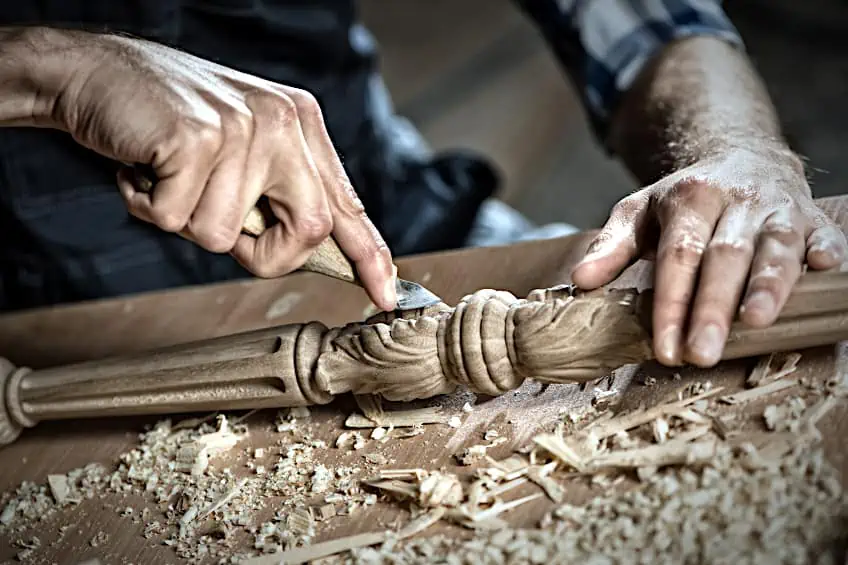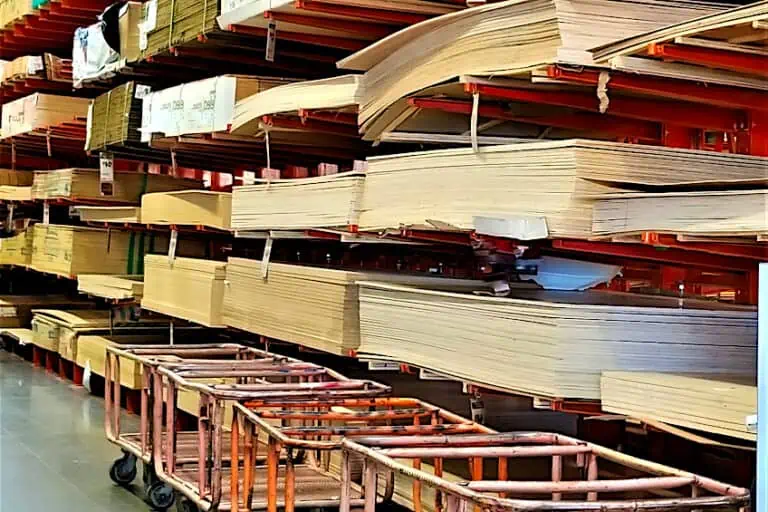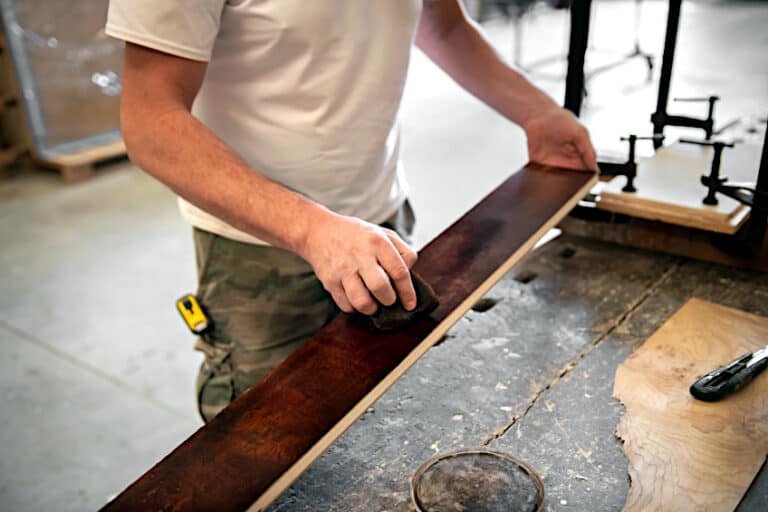Best Wood for Carving – Find Timbers Suitable for Shaping
The art of wood carving has been around for about 12000 years. There are thousands of possibilities when it comes to making something out of wood, and we’ve certainly come a long way since carving rudimentary shapes from driftwood. We have also discovered that there are many wood species that one can use for carving, but which one is best? Let’s have a look at what the best wood for carving is, what makes the ideal wood carving material, as well as some of the characteristics you should keep an eye out for.
Why Is It Important to Choose the Right Type of Wood for Carving?
Wood carving can be an enjoyable creative pursuit and can even be therapeutic for those looking to lose themselves in a creative endeavor for a few hours a day. However, this can quickly turn into a frustrating experience if you have the wrong wood for your carving project. That being said, here are a few factors to consider when selecting wood for your next carving project.
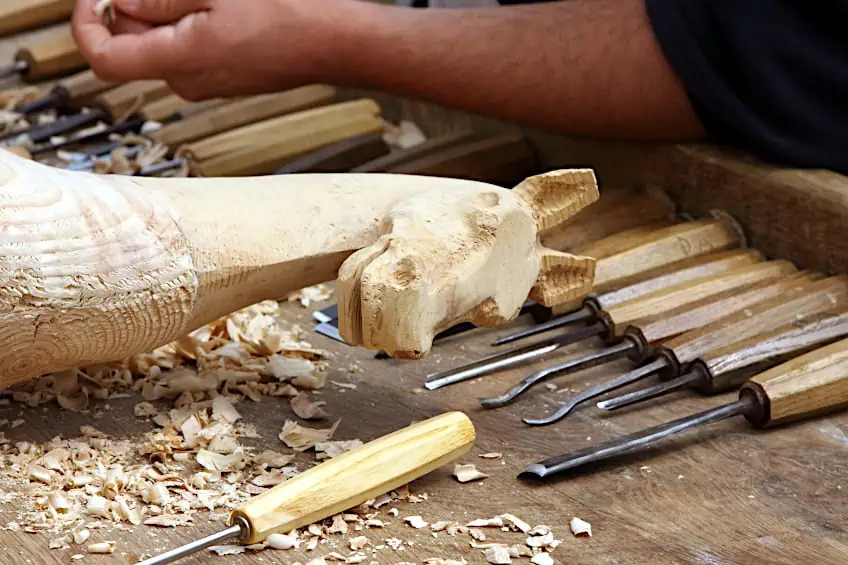
Hardness
Hardness is one of the most important factors to consider when choosing a wood to carve with. Hardness refers to the density of the wood, or how much force it’s capable of withstanding before it gives in. There are many hardwood species out there that are suitable for wood carving, but there are many that aren’t too.
Why is it important to consider hardness when choosing a wood species for wood carving? Well, the harder the wood, the more challenging it will be to penetrate, and the more challenging it will be to carve into your desired form. You don’t want your wood to be too soft or too hard, so it’s best to aim for just the right amount of malleability in your workpiece.
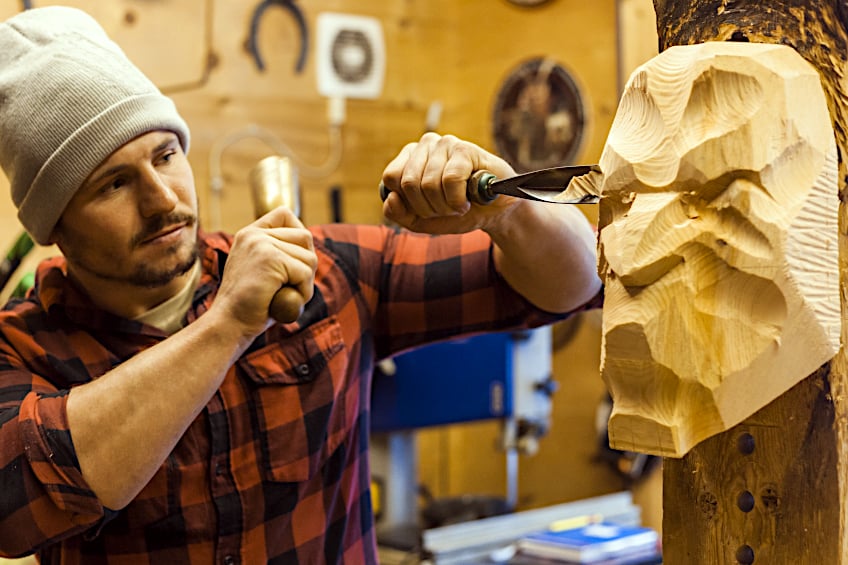
Grain
There are two things to consider when it comes to wood grain in the context of wood carving materials. The first is the grain pattern and the second would be how densely packed the wood grain is. Grain pattern refers to how the grain of the wood is positioned, whether it’s straight-grained, wavy, or simply runs randomly. Grain density refers to how tightly packed the grain of the wood is.
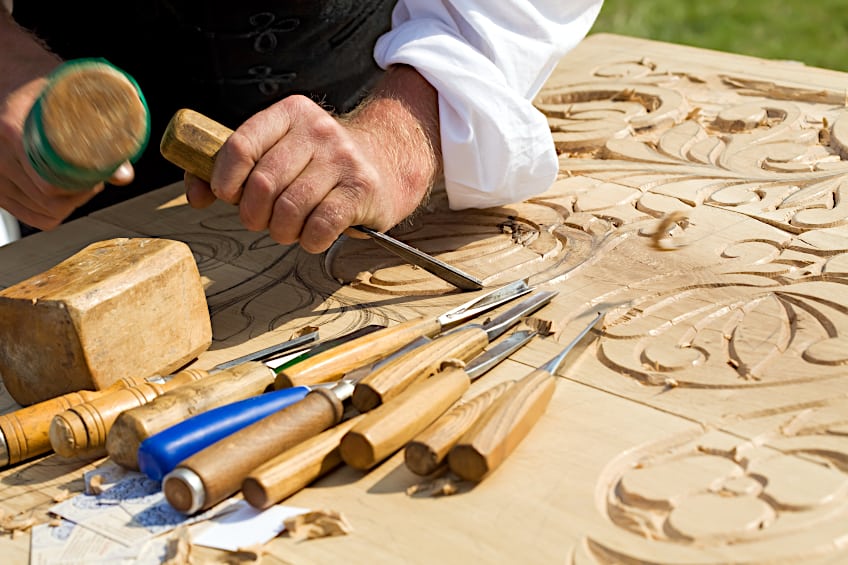
Why is the grain pattern important? The grain pattern of your wood has a degree of influence over how easy it is to work with. Generally, a straighter grain is easier to carve as long as you’re carving in the direction the grain is flowing. Grain density affects hardness, which affects malleability and ultimately how easy it will be to penetrate and shape the wood.
Texture
The texture of the wood isn’t particularly important to the carving of wood per se, but it is something that you should take into account. The texture of a wooden board refers to how it feels. Some wood species have a naturally rough texture to them, while some feel as smooth as ice. So, why does this matter when carving wood?
Well, it can affect how your chisel interacts with the surface of the wood. If your wood is hard and smooth, it can be difficult to achieve initial penetration or cause your chisel to bounce off the wood’s surface.
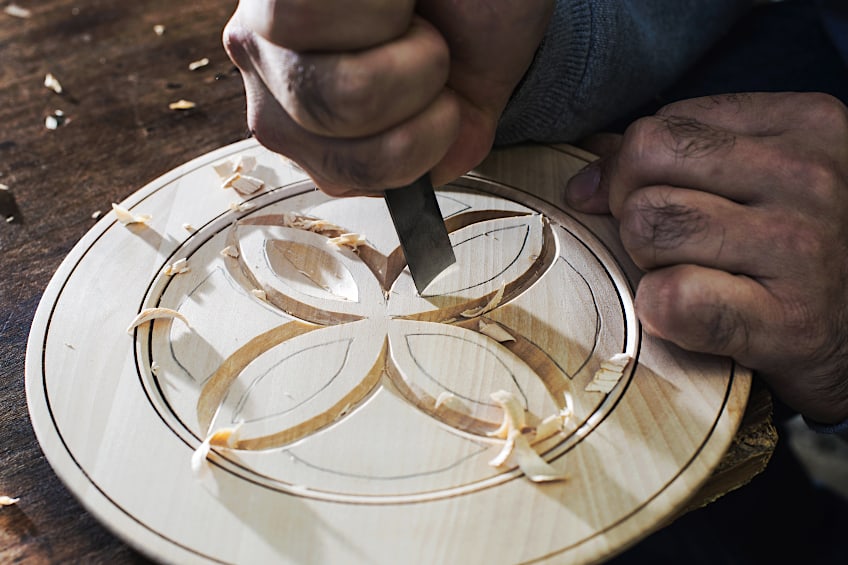
The same goes for if your wood surface has a rough texture, as the uneven surface can make it challenging to carve consistently, in addition to making it difficult to apply a finish and/or sand the surface.
Availability
Even if you think you’ve found the best wood for carving, if there’s too little of it or it isn’t readily available, it won’t do you much good. The availability of your wood affects a number of factors, including the price of the wood and the number/size of workpieces you’re able to make. Choosing a wood that is readily available is almost always the best choice to make.
This can be frustrating, especially if you wanted your carving to be made of a specific imported wood species, but there are ways around this. For example, choosing a more readily available wood that is likely to be cheaper will allow you to purchase more, giving you the freedom to experiment with wood stains and wood treatment oils to emulate your desired color and texture.

Choosing Between Softwood and Hardwood Species
Aside from the individual characteristics of wood, you will also need to choose between the two primary wood types; softwoods and hardwoods. Carving wood from these subsets can be two completely different experiences, so it’s best to familiarize yourself with the characteristics and choose a wood type that best suits your intended application.
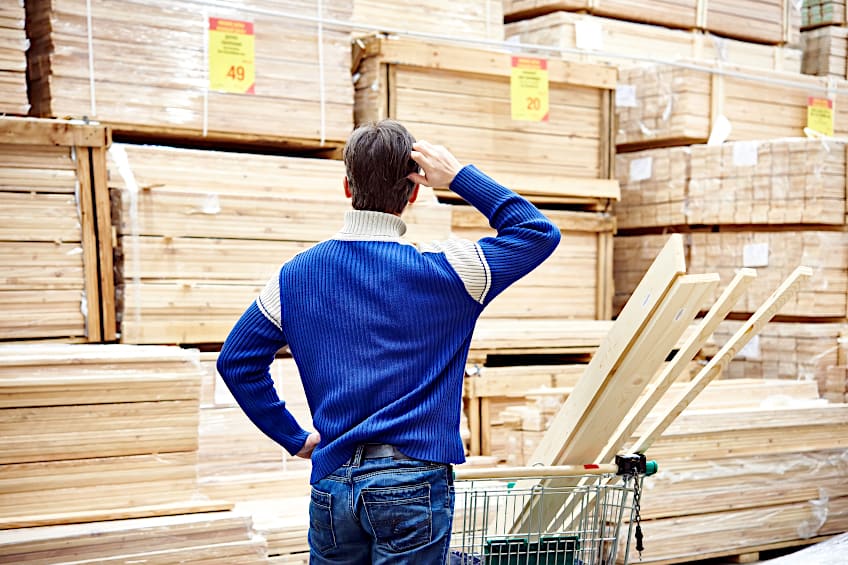
Softwood Species
Softwood species are essentially derived from evergreen trees. These wood species grow quickly and therefore tend to be more readily available compared to hardwood species. They also tend to cost far less than hardwood species because they are easier to come by, making them fairly commonplace in a wide variety of industries all over the world, including DIY wood crafting.
- Inexpensive
- Easy to work with
- Readily available
- Grows quickly
- Lightweight
- Not as dense as hardwood
- Incredibly versatile
- Strong enough for most common applications
- Generally weaker than hardwood species
- Less dense and therefore less durable than hardwood species
- Needs to be coated if used for outdoor applications
- Low tensile strength makes it unsuitable for heavy loads
- Needs to be maintained regularly
These wood species are known as “softwood” because they are generally more malleable and possess a lower tensile strength compared to hardwood species. They also rank lower on the Janka hardness scale than hardwood species, leading to the perception that they are inferior to hardwood. However, softwoods can be harder and more versatile than hardwoods in some instances.
Softwood is used for a number of applications including but not limited to joinery, furniture creation, roofing, the construction of homes, crafting, woodwork, the production of toys, the creation of shelving, and even the interior of cars. As you can see, softwood is extremely versatile and widely used, which is why it’s a good choice for wood carving as well.
Softwood species are also lighter and less dense than their hardwood counterparts making them the ideal choice for any discipline in which hand tools will be used to shape the wood. This means that they are far easier to manipulate, whether you’re cutting, shaving, planning, or bending them to your desired form.
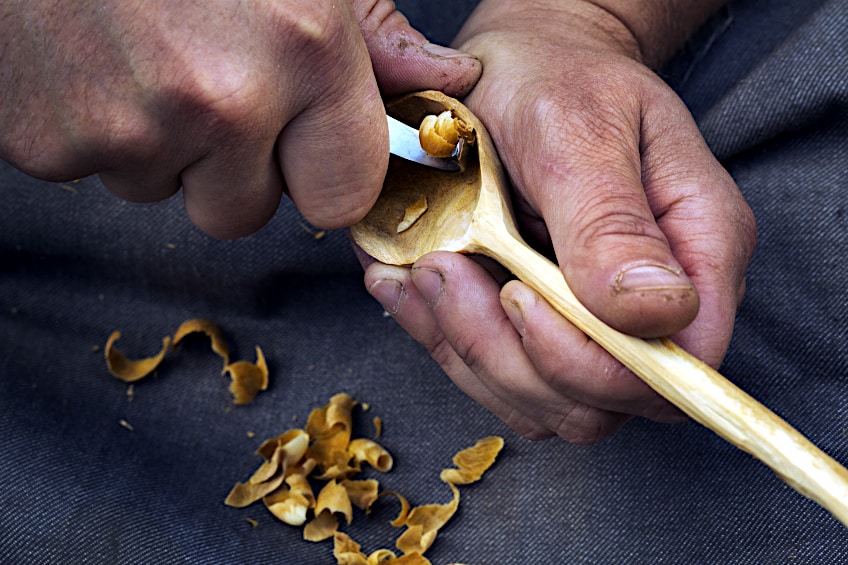
What are the best softwood species when it comes to wood carving though? There are many softwood species in the world, as well as various subspecies to choose from if you’re thinking about wood carving for the first time. However, to save you some time and effort, here are the best softwood species on the face of the planet for carving wood.
| Softwood | Characteristics |
| Balsa Wood |
|
| Basswood |
|
| Cedar |
|
| Paulownia |
|
Balsa Wood
Balsa wood is easily one of the most identifiable and easy-to-use wood species for wood crafting. Balsa is a soft wood that can be identified by its pale white color in addition to its impressively lightweight. Balsa is a really soft wood, which makes it the ideal wood carving material not only for beginners but for experienced wood crafters too.
One of the coolest things about balsa wood aside from it being readily available is the fact that it can be cut with essentially any sharp knife. That’s right! You don’t need a special carving knife to carve this wood, but we still need to get the proper wood carving tools to get the job done. There are some downsides to using balsa wood as a carving material though.
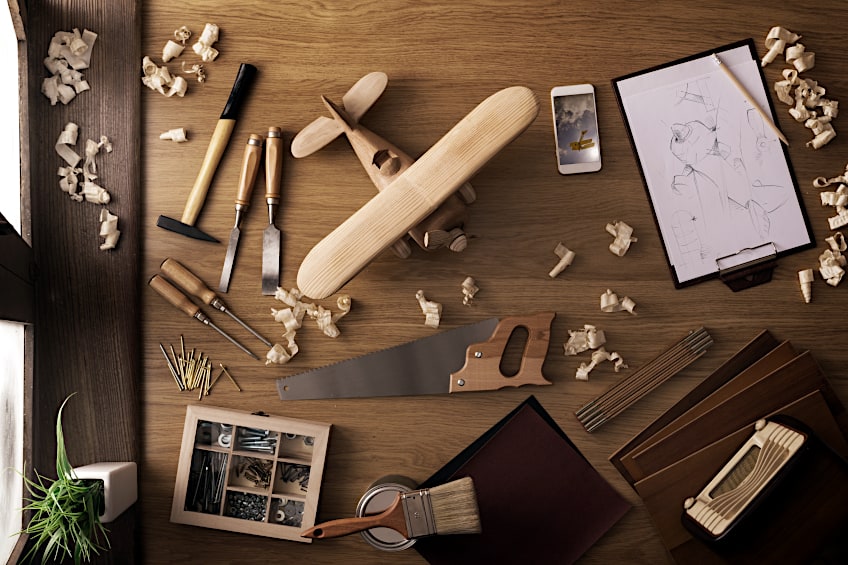
One of the downsides to picking this wood as your carving material is that it’s quite fragile. Applying excessive force to your Balsa wood can result in it cracking or splintering, neither of which is particularly good if you’re looking to carve a workpiece. Balsa wood is also pretty expensive even though it’s relatively easy to come by in wood crafting stores and online.
Basswood
Basswood is considered by many to be the best wood for wood carving. It has a long history of being used by renowned wood carvers and crafting enthusiasts all over the world, and it has a number of characteristics that make it the ideal choice for wood carving. Now this might seem a bit strange considering that basswood is not particularly soft, but it does have some other advantages.
Basswood might not seem like the best wood for beginners or even experienced wood carvers due to how hard it is. Basswood has a Janka hardness rating of 4100 lbf, making it quite hard compared to some of the other softwood species on this list. However, its grain pattern is consistent and smooth, allowing you to easily and confidently carve this wood species.
That being said, basswood is also far less expensive and far more readily available compared to some of the other softwood species on this list. You should be able to find basswood in very good condition both in-store and online, and because it’s so cheap it makes for the ultimate practice wood. It might be hard, but this will greatly improve your skills and give you an idea of what carving with hardwood will be like.
Cedar
Cedar is easily one of the most popular wood species out there for wood crafting. There are many different species of cedar to choose from, and they tend to do quite well when used for wood carving applications. Cedar is quite hard, sporting a Janka hardness rating of about 350 lbf. Like Basswood, even though it’s relatively hard, it’s pretty easy to carve with.
What makes cedar a good choice for wood carving then? Well, cedar is available pretty much everywhere and it’s really easy to carve with. Some of the common types of cedar wood used in wood carving are red and white cedar wood, as they’re the easiest to come by and their wood grain and grain pattern make for stunning workpieces.
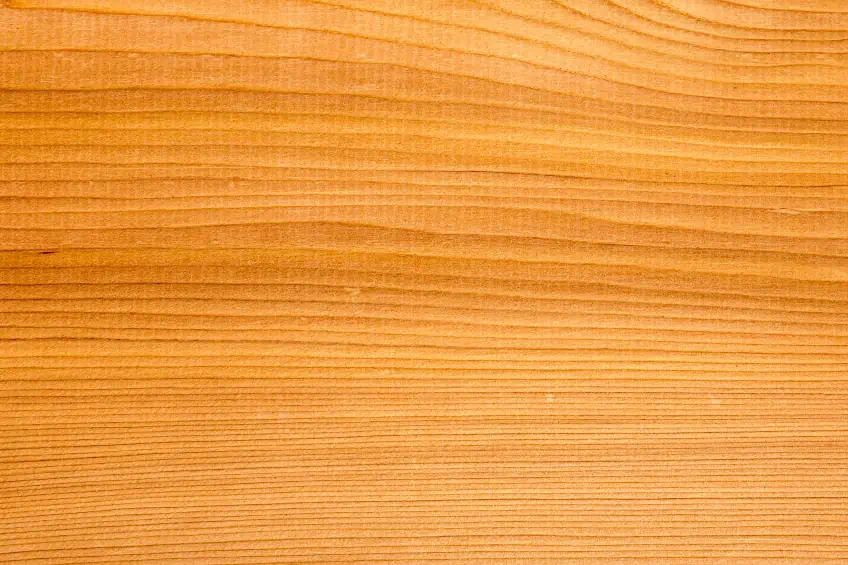
Cedar is far from the best choice though. Even though it is a pleasure to work with and is nice to look at, cedar is also more pricey compared to some of the other wood species on this list. Additionally, even though cedar is water-resistant (at least more so than some of the other wood species) it does need to be sealed or consistent exposure to water will cause your workpiece to rot.
Paulownia
Another wood that has become popular for wood carving in recent years is paulownia wood. While it isn’t as widely used as some of the other wood species we have covered here today, it is one of the easiest woods to carve and has one of the most interesting grain patterns of all the softwood species used for wood carving.
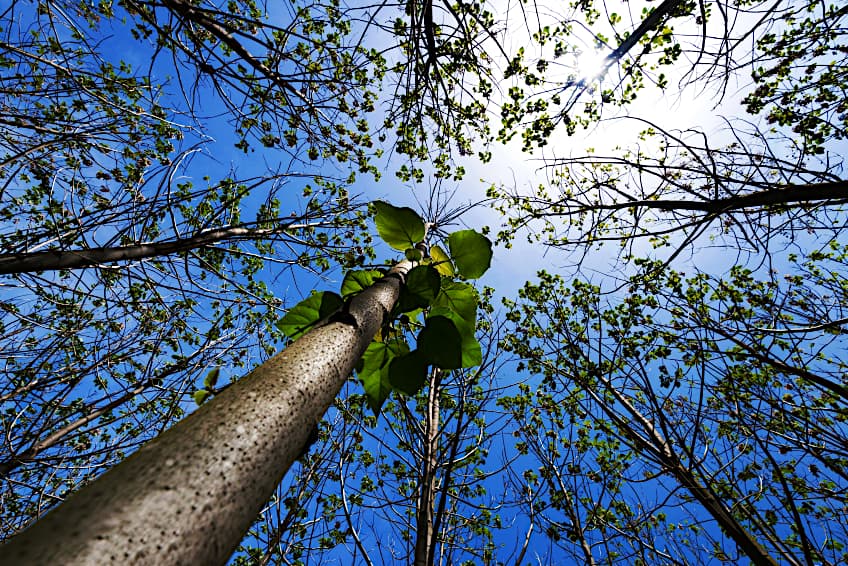
What makes paulownia so interesting is the contrast between the colors of the wood grain and the grain patterns. The contrast between the grain pattern and the color makes for workpieces that are visually interesting. If a good form is selected, you’ll likely have a one-of-a-kind masterpiece on your hands! Are there downsides to using paulownia wood though?
Well, for starters paulownia wood is expensive. This is due to the wood being extremely rare and difficult to get a hold of, especially in the United States. Additionally, you need to be rather careful when carving this wood species. Why? If your tools aren’t really sharp, you could watch your material crumble before your very eyes. If blunt force is applied to paulownia the wood disintegrates, which means you need excessively sharp carving tools to work with this wood species.
Hardwood Species
Hardwood is the crème de la crème of the wood world. It is highly sought after, typically of the highest quality, and is generally in limited supply. Trees that consist of hardwood bloom seasonally, which means that once it’s time to harvest there is only a limited supply put up for sale in the interest of sustainability. This scarcity makes hardwood far more expensive than softwood.
- Extremely versatile
- Very hard-wearing
- Often does not need a coating for outdoor applications
- Capable of bearing immense loads
- Sports a variety of beautiful grain patterns and colors
- High tensile strength
- Inherent protection against impact, abrasions, heat, and moisture
- Far more expensive than softwood
- Can be more challenging to carve
- May blunt and damage lower quality carving tools
- Requires higher experience and technical know-how to carve
Hardwood is known as hardwood because of its impressive density, durability, and rating on the Janka hardness scale. The most commonly used hardwood species have an impressively dense wood grain that can make it challenging to work with, while simultaneously making it extremely durable and less prone to the effects of heat, cold, moisture, rot, and insect infestation.

These wood species are typically used in applications where the workpiece needs to last the lifetime of the user or will be situated in potentially harmful environments. Hardwoods are used to make things like bed frames, large couches, large dining room tables, solid core doors, roofing interiors, boats, garage doors, and even housing for electronics.
Hardwood species themselves are often divided into classes according to rarity, price, and strength. Some hardwood species like walnut and oak are far more expensive than most others and are used for super special applications like the interior of luxury vehicles or one-off works of art. This is generally because of their exclusivity and unique appearance. Like softwoods, hardwoods also have their pros and cons.
What is the best hardwood for carving? Some of the carving materials on the planet are of the hardwood variety. Hardwood is usually reserved for those with more experience in the art of wood crafting as the materials are a bit more challenging to work with and are far more expensive when compared to more beginner-friendly softwood species. Here are a few of the best hardwood species for you to choose from.
| Hardwood | Characteristics |
| Aspen |
|
| Butternut |
|
| Black Walnut |
|
| Oak |
|
Aspen
Aspen is a pretty good wood it uses when considering a wood carving material. While aspen might not be classified as a softwood it’s still pretty soft, and it tends to be readily available so it’s fairly popular among wood carving and wood crafting enthusiasts. Aspen wood is found in parts of the western United States, with most of them being concentrated in the states of Colorado and Utah.
The nice thing about aspen is that there’s quite a bit of it to go around, which makes it noticeably less expensive compared to some of the softwood species we’ve covered previously. Aspen wood is known for its almost white heartwood and sapwood as well as its extremely soft wood fibers which make it a pleasure to carve.
Black Walnut
Black walnut is the premium choice when it comes to selecting the hardwood for wood carving. It is prized for its grain, density, durability, and color. Black walnut is very much on the high end of the carving wood spectrum and can be quite expensive, but if you’re willing to pay a bit more for the wood you’ll be pleasantly surprised by its quality and workability of the wood.
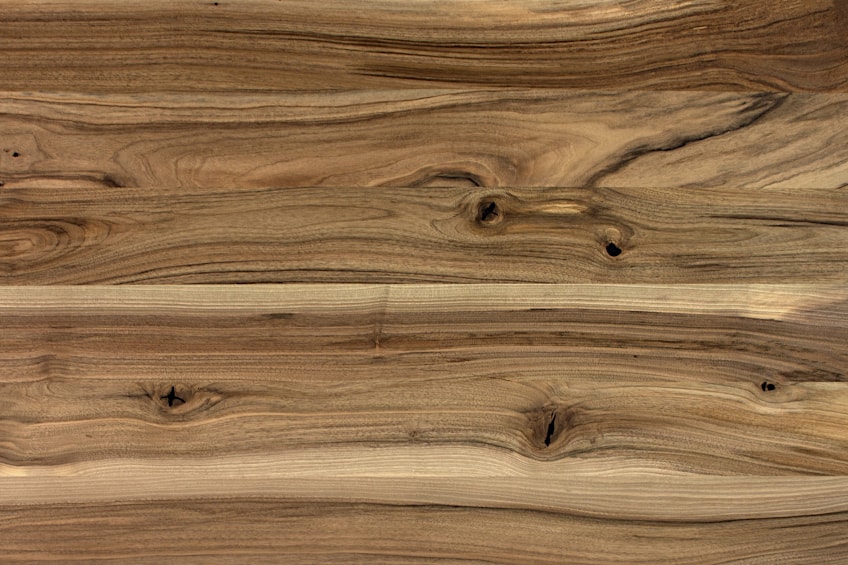
The heartwood of black walnut is a deep brown while the sapwood is sleek white. While it can be quite dense and therefore difficult to initially carve, once you get the hang of it you’ll find that walnut is a pleasure to work with, and once you’ve completed carving your workpiece you’ll find that black walnut polishes up quite nicely and can be used for small and large workpieces.
Butternut
If you’re looking for an excellent hardwood for carving then butternut could be exactly what you’re looking for. Butternut wood looks similar to basswood but it’s just a shade darker and can be found in parts of the United States as well as Canada. Butternut wood is not a commonly used wood and can be challenging to come, but it is well worth it if you’re willing to order some.
What makes butternut wood so special? Well, like some of the softwood species we covered previously, butternut wood is super soft which makes It an ideal wood for wood carving. It also responds well to polishing and wood treatment oils, which makes it fairly easy for newcomers to make really good-looking workpieces with little effort needed.
Oak
Oak is yet another high-end hardwood that can be used for wood carving. Oak is a very strong wood that can be used for a wide variety of applications, including the creation of couches, shelving, structures, cutlery, chairs, tables, and even entertainment units. That being said, even though it is so robust and hard-wearing, it makes for a good wood carving material.
It might be a bit of a challenge to carve oak by hand due to its density, so you’ll likely be better off using powered carving tools instead. This doesn’t mean that it’s impossible to use hand tools to carve oak wood, but considering how dense it is it can be challenging. If your project isn’t time sensitive and you want the experience of carving oak by hand, why not go ahead and try it out?
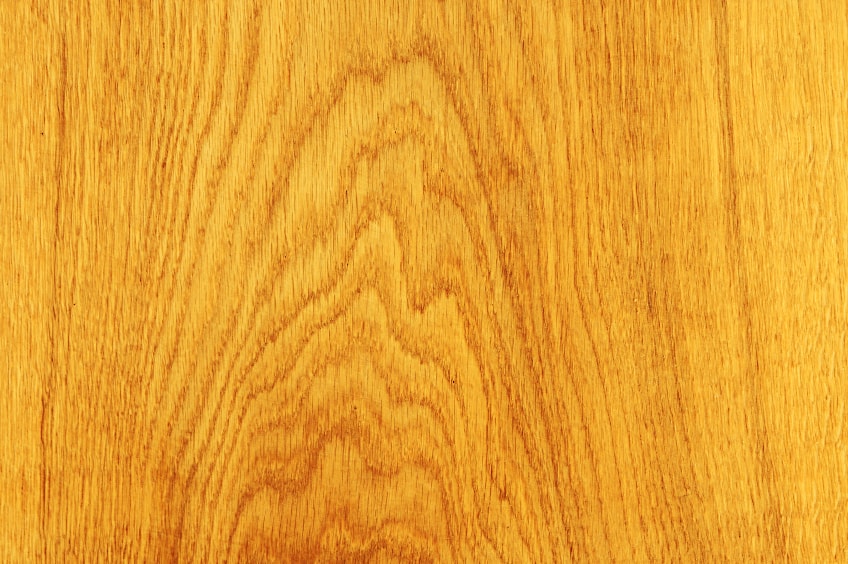
How to Prepare Wood for Carving
Now that you know what some of the best wood for hand carving workpieces are, it’s a good idea to know how to prepare wood for the carving process. While you could simply start carving, it could be a bit more challenging if the wood is unprepared. That being said, here are a few steps you can follow to properly prepare wood for carving.
Select Your Wood
Choosing the best wood for hand carving does have a subjective element to it. While some wood species are objectively better than others for wood carving, it will eventually boil down to your personal preference. Choose a wood that is best suited for the size of the workpiece you intend to create as well as the tools you have available and your skill level.
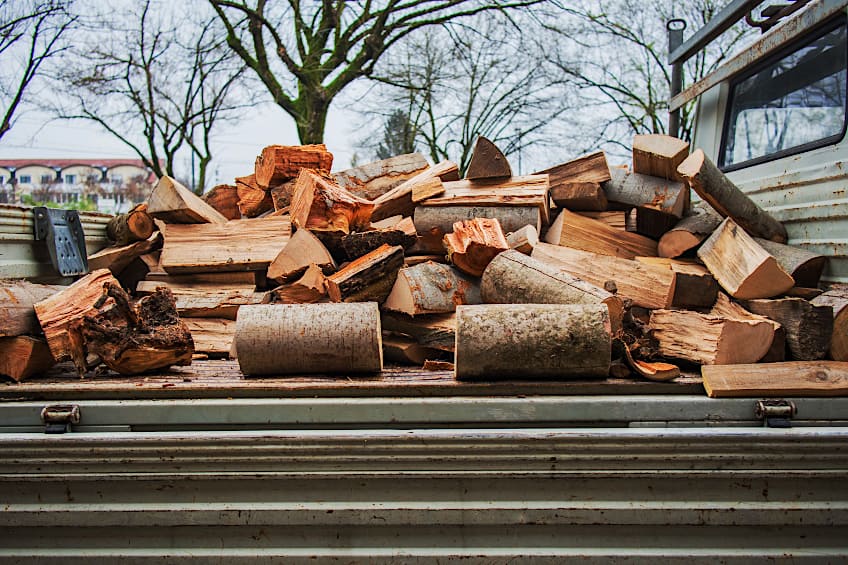
Saw Your Wood to the Preferred Size
This step is also largely subjective. Sawing your chosen wood to the size and shape most appropriate for your workpiece can involve power tools or some simple hand tools. Essentially, all that you want to do here is get the correct size and rough shape of the form you intend to produce from your carving material so that you can refine it using your carving tools later on.
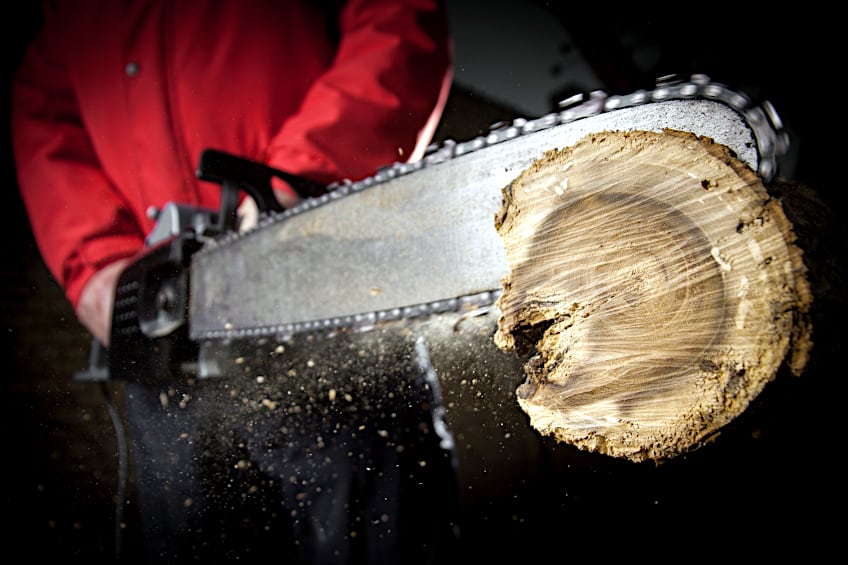
Plane Your Wood
Planeing your wood is yet another step in the preparation process that allows you to further shape your wood into the desired form. Aside from sawing, using a powered planning tool or hand plane will allow you to further shape the surface of your workpiece into its desired form. Planning is precision work, so be sure to take your time and work meticulously during this step of the process.
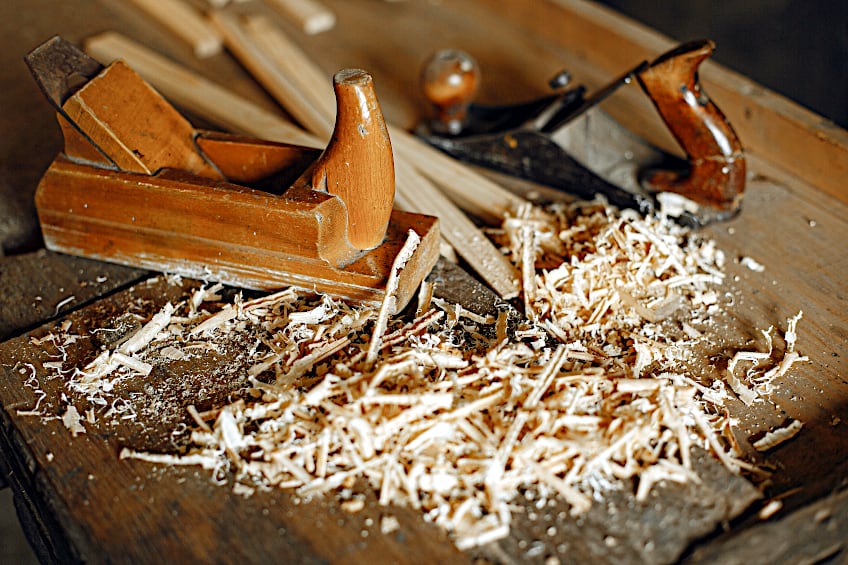
Sand the Surface of Your Wood
The final step you should take before you get to carving your workpiece is to sand the surface of your workpiece. When it comes to shaping a workpiece the best grit of sandpaper to use is rough grit sandpaper. Feel free to use a power sander or some good old-fashioned sandpaper, although you’ll likely have an easier time using a power sander if your workpiece is particularly large.
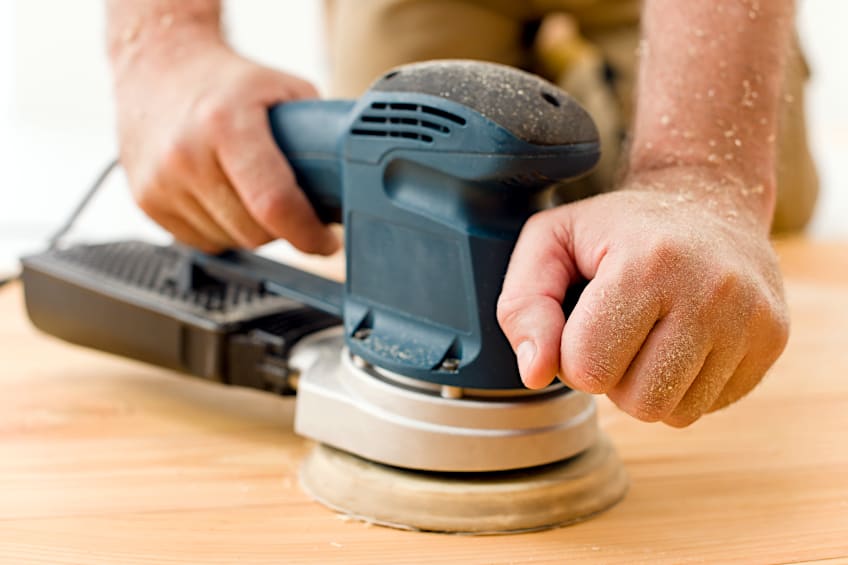
Now that you know what type of wood is good for carving, how to select a wood for carving, and how to prepare a wood for carving, it’s time for you to get out there and put your newfound knowledge to the test. Always take the application of your workpiece, the tools you have available, and the time you have to work into account when choosing a wood for carving!
Frequently Asked Questions
What Type of Wood Is Good for Carving?
Choosing a wood for carving can be frustrating. There are many things to take into account, including what tools you have available, what your skill and comfort levels are, how big you would like your workpiece to be, and what you would like it to look like. Generally, softwood is the easiest wood type to use for wood carving.
Is Oak Good for Carving?
While oak has been around for a long time and is used for a variety of applications, is oak good for carving? Oak is one of the best wood species to use for carving and is capable of producing some of the best-looking and hard-wearing workpieces out there.
What Are the Different Types of Carving Wood?
The two primary types of carving wood on the market are softwood species and hardwood species. While hardwood species are more durable and generally provide a sleeker aesthetic, softwoods are easier to work with and are generally cheaper.

I have been into woodworking since 2005 and woodturning since 2011. Because of my love for wood and woodworking, I started woodhappen.com to teach other enthusiasts about how to finish and seal wood, the best woodworking tools, the different types of wood, and everything else related to woodworking! Read more about me here.

